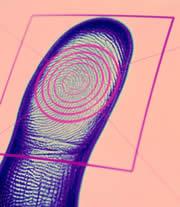 © Punchstock
© PunchstockWhat is electronic voting?
The machines stirring up a storm are officially dubbed direct recording electronic (DRE) machines. Instead of marking or stamping votes on a piece of paper, voters touch a screen and a computer records and tallies their votes electronically.
How widely is electronic voting used?
Electronic voting machines took off in the United States in the chaotic aftermath of the 2000 presidential election. The deciding result in Florida was dogged by disputes about poorly designed paper ballots, which might have been filled in or counted incorrectly.
Armed with an injection of federal funds to update equipment, election officials rushed to buy electronic voting machines.
Proponents say that electronic voting machines are quicker, easier to understand and more accurate. They can, for example, prevent people accidentally marking two boxes or none at all. Around 28% of US voters are expected to use electronic voting machines in November 2004, double the number who used them in 2000.
Why is electronic voting controversial?
The chief concern is that the machines could harbour faulty code, or could be maliciously tampered with, so that they do not accurately record the number of votes. A vote cast one way by the user, for example, might actually register for another candidate inside the machine.
There are numerous cases in which faulty electronic voting machines are accused of having biased the outcome of elections in the past, although none has been proved in court. In November 2003, for example, there were suggestions that a Republican school board candidate in Fairfax County, Virginia lost her race because e-voting machines were not correctly logging votes.
In addition, the majority of machines do not print a paper receipt, so a voter cannot check whether the machine has recorded his or her vote correctly. This has prompted sharp criticism because a machine's results will not be able to be verified independently in the event of a re-count.
“I wish everyone would be a little calmer about it”
Michael Shamos
Computer scientist, Carnegie Mellon University
Manufacturers have also been slammed for keeping the source code of their software under wraps, because this means security experts cannot test it for holes. A report released in July 2003, for example, analysed software code that had been leaked from leading manufacturer Diebold Election Systems in Ohio. The analysis catalogued a series of security flaws. "It was wildly insecure," says Dan Wallach, a security expert at Rice University in Houston, Texas, and one of the report's authors.
Are there checks on the machines?
Electronic voting machines have to be certified in the United States but critics say that they the companies doing this are inadequate and that the detailed results of tests are not publicly released. On top of this, each electoral county chooses and runs its own voting system, so there is wide variation in how the machines are tested and supervised.
What do critics think should be done?
Many are demanding that machines include a printed confirmation. This would be a piece of paper that shows how you voted and is posted in a ballot box like a normal voting slip. In Nevada, election officials now require that their electronic voting machines include such a printout.
Others believe that we should learn to accept electronic voting machines and simply increase the rigour and openness with which they are tested and supervised, so that the public has confidence in them. Realistically, few changes are likely to be introduced before November.
Is the fuss overblown?
It is hard to say. Some experts point out that the paper ballot system has always been vulnerable to tampering, and that electronic voting is little worse. And the fuss could obscure the more serious shortcomings of other ballot systems, such as poor ballot design and inaccurate voter registration. "I wish everyone would be a little calmer about it," says computer scientist Michael Shamos of Carnegie Mellon University in Pittsburgh, Philadelphia.
But critics respond that large-scale rigging of paper ballots is difficult, whereas a determined group could hack many machines and so have a greater influence. If the US election is a very close call, as is predicted, electronic voting is bound to come under the spotlight.
Have electronic voting machines been used elsewhere?
Yes. During this year's election in India, over 380 million people voted using simple ballots on computerized machines, with relatively little dispute. During Venezuela's August referendum about Hugo Chávez's presidency, however, opponents questioned the results from touch-screen voting machines. But election monitors rejected the accusations and, in this case, were able to use paper records of the electronic votes to audit the result.
Computer scientist, Carnegie Mellon University
